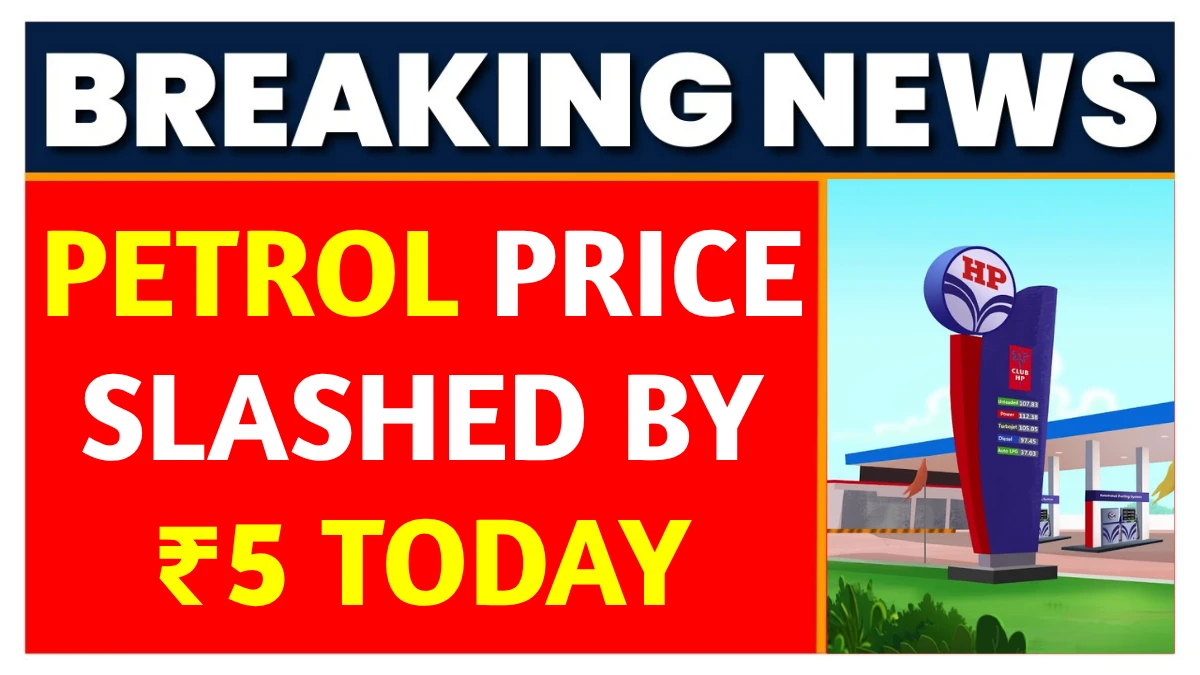A sweeping reduction in petrol rates has sent ripples of relief across the country today. Consumers are reacting with surprise and delight as petrol prices plummet by ₹5 per litre, marking one of the sharpest single‑day cuts in recent memory.
In this update, we explore what triggered the slash, how it affects households and businesses, and what you should know going forward.
What’s Behind the Cut?
The ₹5 per litre cut in petrol prices stems from adjustments made in taxation policies at the state level. While the central pricing machinery and oil marketing companies evaluate crude rates and global benchmarks, the final retail price often hinges on excise duties and value added tax (VAT) imposed by state governments. In this case, one or more states have chosen to reduce VAT, passing the benefit directly to consumers and creating an immediate impact at the pump.
Such tax cuts generally reflect the government’s attempt to ease inflationary pressures, offer economic relief to households, and stimulate consumer spending. With fuel being a major cost component for transportation, logistics, and commuting, a substantial drop like this carries ripple effects throughout the economy.
How Much You Save and Why It Matters
For a typical daily commuter filling a 15‑litre tank, a ₹5 cut translates into a savings of ₹75 in one fill‑up. Over weeks and months, those savings add up — especially for those who drive regularly. Ride‑share and delivery drivers, long‑distance travellers, and transport operators feel the impact even more strongly, as reduced fuel costs directly improve their margins and reduce fare pressures.
The timing of the cut is key. In many cities, fuel prices had been steadily rising, putting more strain on household budgets. The sharp reduction helps breathing space for middle‑class and working families. It also relieves pressure on related sectors. Goods and services whose logistics depend on petrol will incur lower costs, potentially leading to moderate relief in retail pricing over time.
Regional Variations and State Tax Impact
Because fuel taxation is partly under the purview of individual states, the magnitude of price change may differ across regions. In states where VAT is steep, the reduction may be more pronounced; in states with lower tax burdens, the cut may be less dramatic or slower to reflect at pump level. Some states may even absorb the cut partially to balance their revenues.
Consumers should check their local fuel outlets to verify the actual new price and timing of the cut’s implementation. Sometimes, rates take a few hours or even a day to adjust depending on internal supply and billing cycles. If your state has announced a VAT cut or notification, that’s usually the trigger for such a price move.
Economic and Inflationary Implications
Fuel prices have a wide multiplier effect in the economy. When petrol becomes cheaper, transport costs fall, leading to lower prices for goods and commodities because supply chains become cheaper. This helps curb inflation, which is a pressing concern for central banks and policy makers.
This price cut also gives consumers more disposable income, which can boost spending in sectors like retail, dining, and entertainment. In aggregate, it may stimulate economic activity. On the flip side, governments must balance loss of tax revenue with the benefits of increased consumption and tax collections in other areas.
Things Consumers Should Watch
Even with this welcome cut, it pays to stay alert. Sometimes, such cuts are temporary, intended as political signals or short‑term relief. If crude oil prices or global supply shocks reverse direction, rates can climb back quickly. Monitor announcements from oil marketing companies and state tax circles.
Check whether the petrol you get is truly reflecting the cut. Inrare cases, middlemen or distributors may delay passing on benefits. Also, watch out for hidden costs like fixed markups or handling charges that don’t adjust downward immediately.
For vehicle owners, cheaper petrol is a moment to plan maintenance, future trips, or even reconsider car use patterns. With less pressure on fuel expenses, longer drives and mobility may become more accessible.
Final Thoughts
The ₹5 per litre drop in petrol rates represents a meaningful win for consumers and transport operators alike. It helps reduce daily burdens, lowers inflationary pressures, and offers breathing space in tight budgets. Yet its long-term value depends on sustained policy, global energy conditions, and state compliance.
If you’d like, I can pull up city‑wise updated petrol prices after this cut or a 30‑word disclaimer to accompany this piece. Do you want me to fetch that?
Disclaimer: Gold and fuel prices are subject to market fluctuations and regional taxes. Always verify rates locally before making purchases or investments. This article is for informational purposes only.
